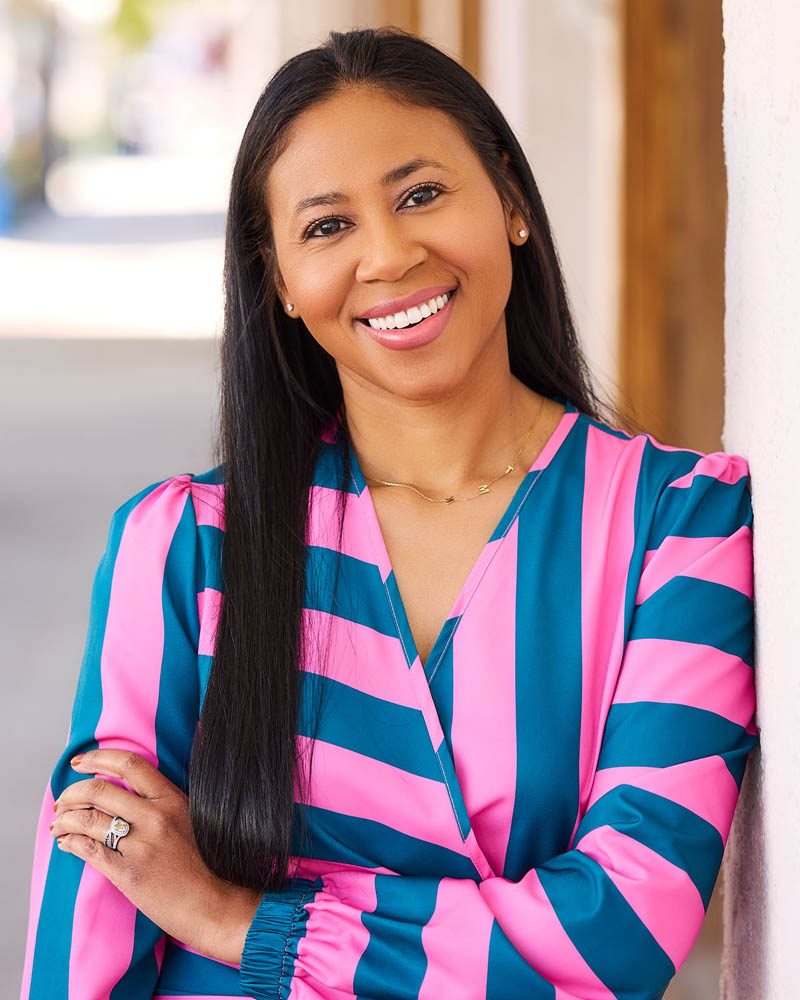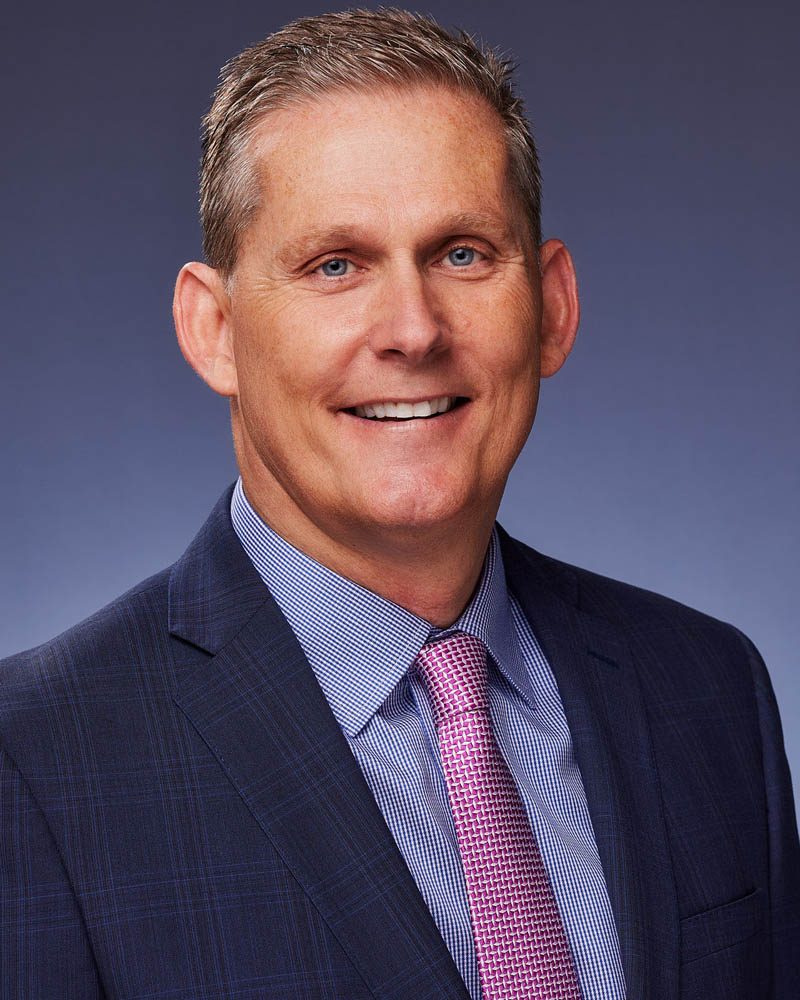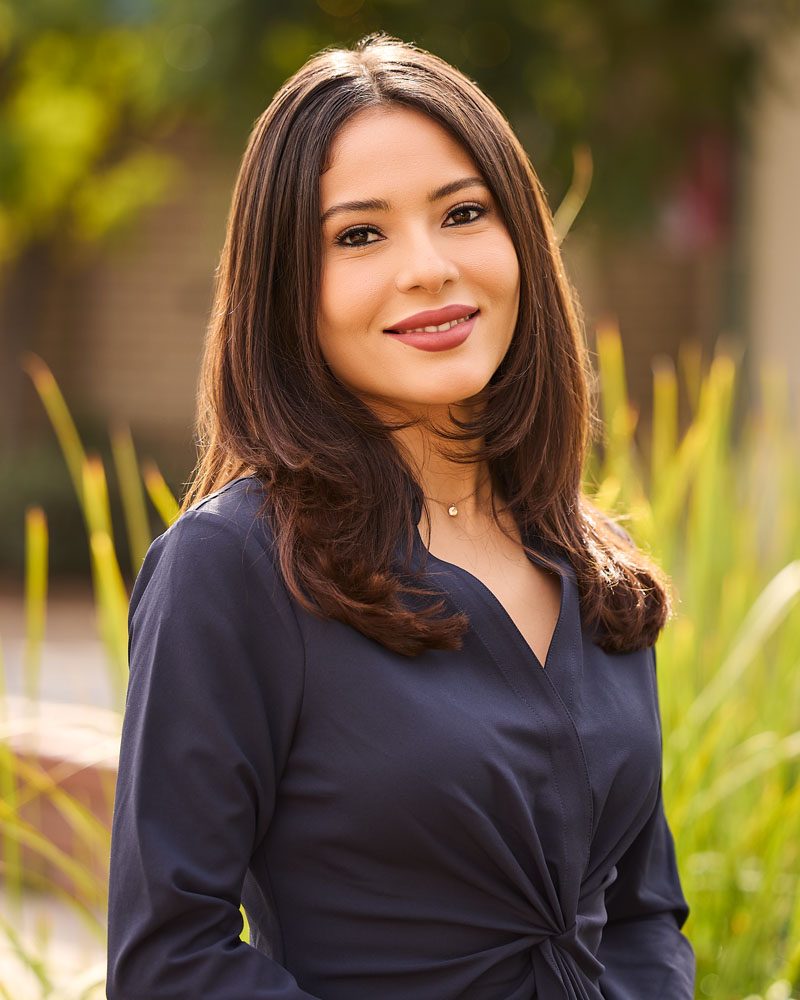Technical Things to Keep in Mind to Optimize Your Headshot
You are likely going to use your headshot in various places. You might use it on your business card. You might use it on front yard signage. You might use it on the agency website. You might use it on social media or other online profiles. There are technical considerations to ensure your headshot stays premium looking across all of these scenarios.
On Your Business Card
Take control of how your headshot will look on your business card. Usually, a person will take the headshot given to them by their photographer and hand it over to the business card designer. Then the designer shrinks it down to fit on the business card.
Instead, before you start working with a headshot photographer, ask your business card designer what actual size the photo will be on the business card, in either inches (like 1 inch wide by 1.25 inches tall) or in pixels (like 300 x 375). Then, you can ask your chosen photographer if they can provide the headshot in the standard sizes they provide but also in the dimension of 300 x 375 pixels at 300 DPI – which is essentially print quality. Now, go to your card designer with this headshot and tell them not to alter it, to ensure the best quality.
This way, you keep control of how it turns out. When a business card designer is shrinking it to fit, who knows what else is being done.
On Front Yard Signage
The most popular real estate sign size is 18 inches tall by 24 inches wide. So, just like above, figure out what size headshot you’ll be fitting in there. This is important because if a photographer gives you an 8×10 print quality file, but you want to use a size of 9.6×12 inches, you’re going to need to stretch it by around 20 percent, which means losing sharpness.
So, ask your photographer in advance if they can provide the size you need and submit that size to the yard sign designer. This will ensure the sharpest result, helping your sign pop more than most – or at least more than people who stretched their headshot.
On the Agency Website
I think you get the idea by now. Find out from the web designer what are the pixel dimensions that they use on the website and what is the typical file size of the headshot. For example, they might say they use headshots sized at 600×600 with a max file size of 100 KB.
Armed with this information, ask your photographer in advance if they can provide a headshot in that size with maximum quality for those parameters. Now, your photographer can do the compression to maximize quality instead of the website designer, which is primarily concerned with minimizing file size over how good the quality is.
On Online Profiles
For online profiles, most of them do their own compression when you upload a shot. It is recommended that you ask your photographer to provide a headshot with an ideal resolution for most online profiles in addition to a print quality file.
Now, test as you go. For example, on LinkedIn upload the print-quality file and check out how it looks on a desktop and on the app. Now delete the headshot and try the other resolution the photographer provided for most online profiles. Which one did LinkedIn compress to look better? Go with that one. Repeat on each online profile you will be using your headshot on.
Follow at least these three guides and you’ll be on your way toward maximizing the results and uses of your real estate headshot to stand out from the competition.




